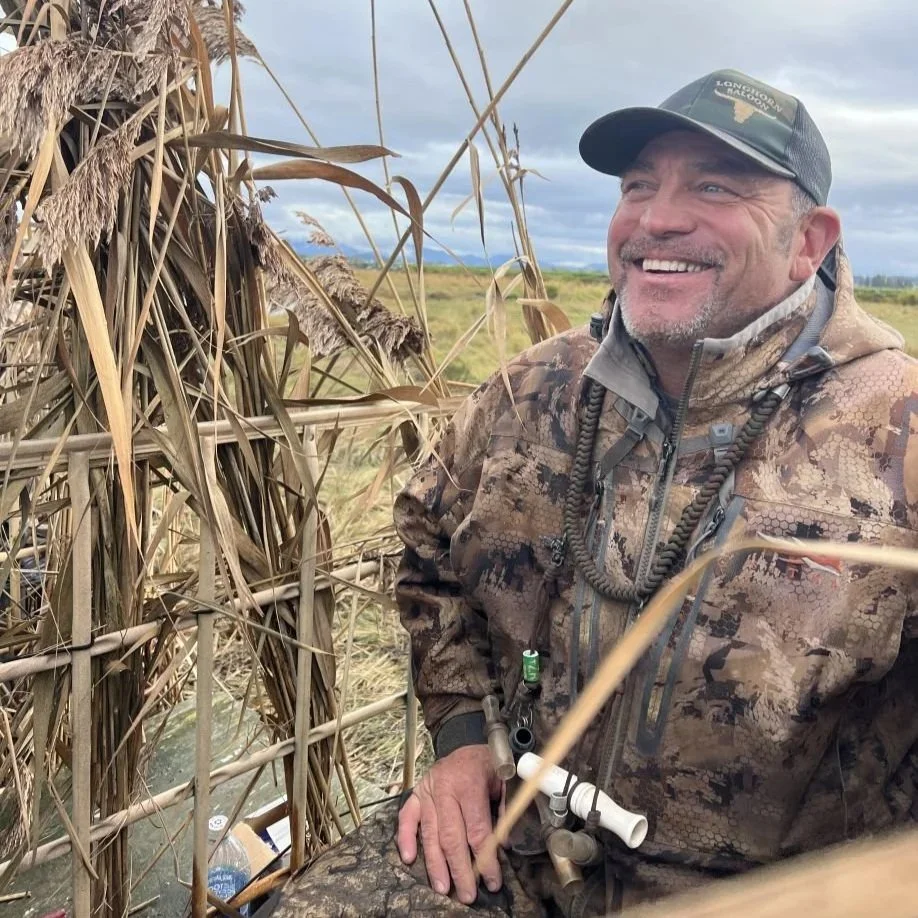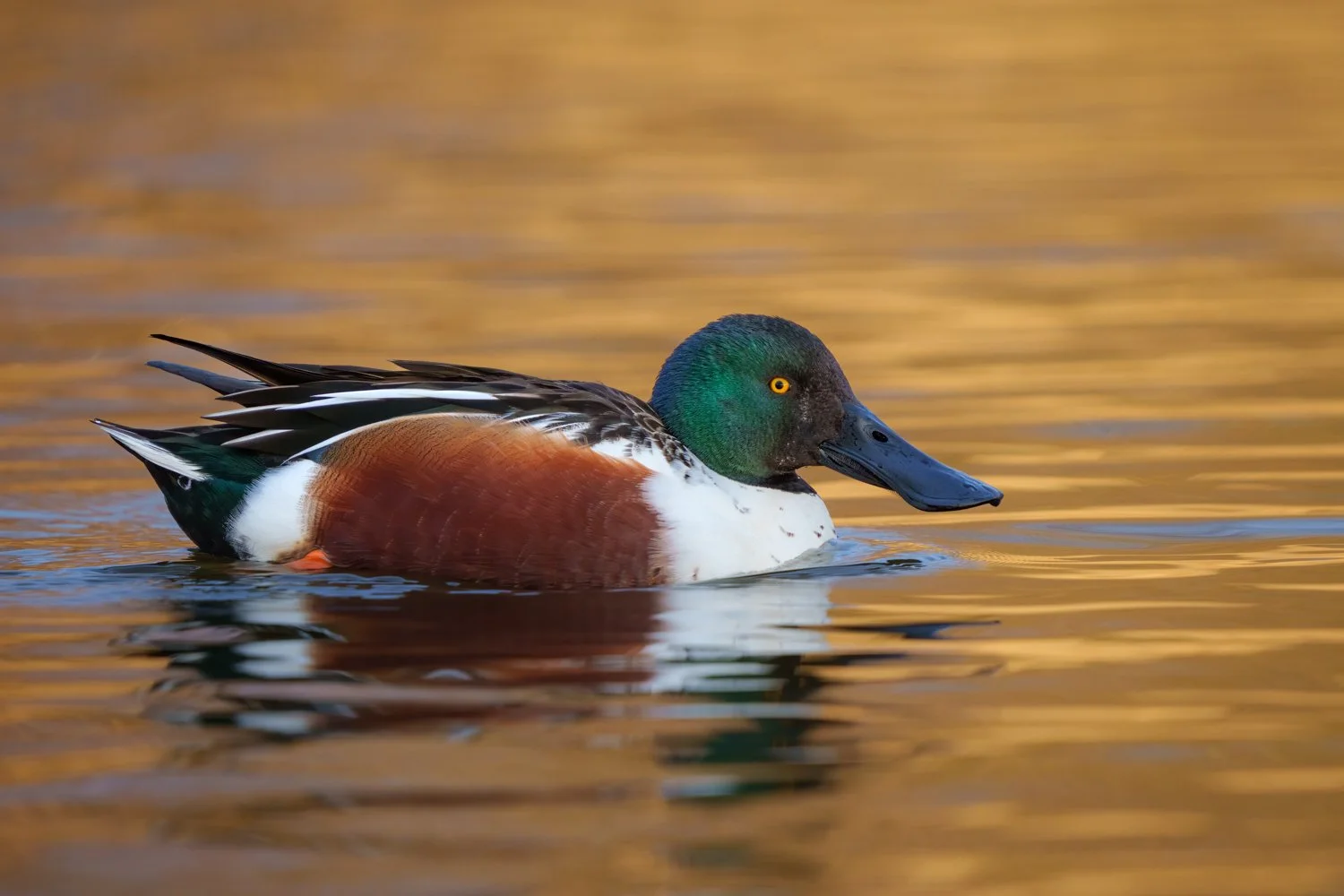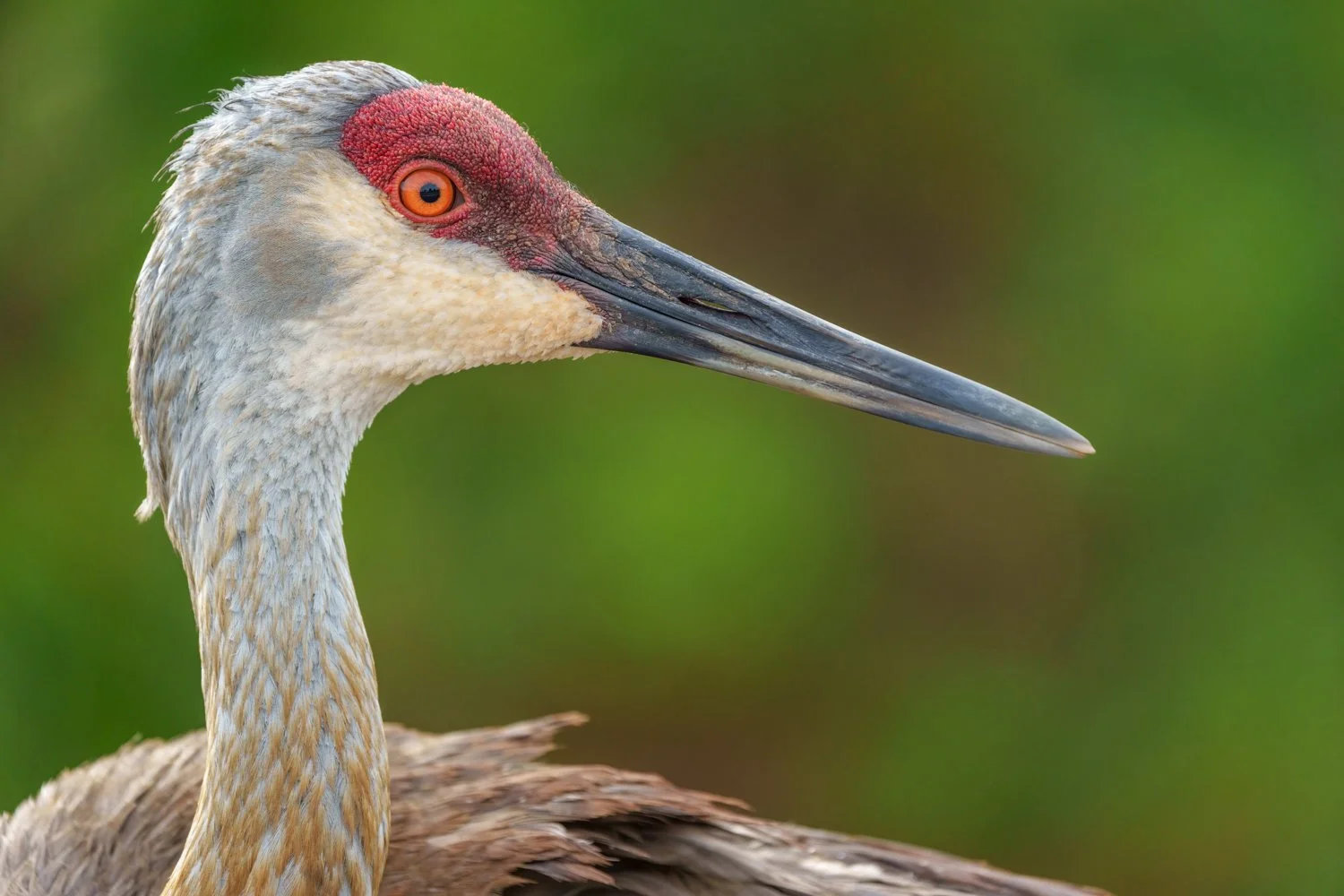Bird Wise Observations: Duck Hunter John Orestad
John Orestad (Photo: Victoria Roberts)
Be Bird Wise is back for the 2025-2026 Fall and Winter seasons! Be Bird Wise is an informational initiative of Skagitonians to Preserve Farmland and its agency and organizational partners across Skagit County to inform the public about the dynamic relationship between the working landscape and the wild birds that congregate here every year.
During the fall and winter birding season we share the testimonials of the different user groups in Skagit whose lives intersect with the wild birds in and on the landscape. This month we talked with John Orestad, a local duck hunter who grew up in Skagit Valley and resides in Burlington, and hunts in Edison, where he is also part of a hunt club. John is a lifelong Skagitonian and shares his observations of change across the landscape and in his beloved pastime of hunting waterfowl.
My first memory as a kid is of duck hunting in the sloughs of Bayview. I grew up on Gardner Road in Burlington near the boat launch on the Skagit River. I’ve been hunting by myself since I was 12.
I orient my life around the hunting seasons, I even used to take the fall off work when I ran my own construction company, to hunt ducks and big game, and to fish. In my life, I’ve nurtured relationships with landowners. Now I hunt mostly in a private hunt club, on my friend’s land near Edison.
Our club is about 340 acres and borders Samish Bay. It’s next to another club that’s at the mouth of the Samish river. We get bufflehead, teal, goldeneye coming to the property. They’re challenging birds to shoot, as they fly low and fast over the water, and they’re small.
The Northern shoveler is my favorite. We call them Hollywood because they’re so colorful, heads so green they look black, and cinnamon in their plumage.
Northern Shoveler (Photo: Sharon Wada)
I see a lot of non-game birds when I am in the blind, too. We’ll have chickadee land on the blind, and I watch shorebirds along the sloughs when it’s quiet.
We have herons, eagles, and short-eared owls. The eagles will steal a retrieve before my dog can get it! The eagles scavenge the wounded or dead ducks that we miss.
Even Sandhill cranes land occasionally on the hunt club acreage. Cranes were here in the late spring one year on their way north, when the fields were ripped up and ready to plant. We saw them for that one day, that’s how fast birds move through here when they’re migrating.
The cranes were looking for forage. Our club plants barley and corn, and we’ve added a freshwater pond for waterfowl on the property. The other hunt clubs are planting for birds, too.
Sandhill Crane (Photo: Sharon Wada)
We live in this agricultural area of Skagit that everyone loves for its scenic beauty, but hunters are the only ones intentionally planting for the birds that birders and photographers come to see. Farmers don’t intentionally plant for birds, but the feed left in fields has attracted birds for decades.
I tell birders you should be thanking hunters! Birders and photographers don’t have to pay anything to see birds. Hunters pay a seasonal fee to hunt to Washington State Department of Fish and Wildlife. Those hunting permit fees go to waterfowl habitat restoration and maintenance. Hunting permits help pay for the quality and abundance of the waterfowl and habitat we see in Skagit.
Hunting in Skagit is special. There are places you can go where there is no one else there, for how inaccessible it is. The north fork of the Skagit between Craft and Ika islands is tidal and you can only get there by boat. You have to be careful you don’t get stranded. It’s like hunting in a Ducks Unlimited magazine, one of those old images of a guy in waxed Filson gear or LL Bean, a rowboat like from the 1940s.
I always thought those images were so cool, I wanted to be in that moment like in the image. And now I’ve spent my life living in that image. This lifestyle lasts a lifetime, making memories every season, and when the season ends, you are already talking about the next season with your buddies.
Hunting is not just about shooting ducks. It’s about camaraderie with others, it’s about a connection to the land and wildlife, to a working animal partner in your hunting dog. It’s exciting to have a bird elude a shot, or to watch your dog do a 500-yard retrieve after hours of training for these moments
I want it to be cold when I hunt. The freshwater areas freeze, which pushes ducks to the sloughs and river closer to the saltwater (which doesn't freeze). We used to have winters in Skagit, when I was a kid, with snow! Now we might get snow every 8 years. I remember shooting ducks on Thanksgiving, as a high school kid in the late 1980s, in the snow.
Winters would hit and the river would freeze and the birds would need fresh water and they would go into the ditches and sloughs. Hunting in the Skagit and Samish rivers is challenging because the water is moving.
Barrows Goldeneye (Photo: Sharon Wada)
But a freeze doesn’t happen as much anymore. More recently we’ve had mild winters in the 40s (Fahrenheit) most of the season. That’s not good duck hunting. The birds don’t move around as much.
Most birds will stay further north if the conditions are good. The birds migrate further down when the weather is cold. When Canada has extreme weather, the birds push south and come to Skagit. The number of birds will go from 20 thousand to 50 thousand ducks literally overnight if conditions and storms push them here from elsewhere.
During the hunting season I get up really early in the morning. One year between 2 and 4 am I heard thousands of snow geese flying overhead in the night sky. You can’t see them but you can hear them and their vocalizing went on for those two hours. They were flying nonstop, like a wall of sound.
I think the weather impacts birds' movement more than anything else nowadays. We’re always going to have [crops] in Skagit. Agriculture has changed a lot since the days of peas and carrots; now it’s potatoes and feed corn, and the bird numbers have grown.
There are other changes in Skagit, too. Bird flu is really hard on the birds. It’s not as apparent this year, but three years ago it hit hard. Snow geese and ducks get it. It’s obvious when they’re sick; kinked neck, walking around like they’re drunk, hundreds of birds like that, you could really see it. Bird flu knocked the bird numbers down.
There are a lot more birdwatchers and other waterfowl hunters, too. Birding has especially grown in popularity. In Edison we see birders near the hunt club land because of the short-eared owls. The owls are the real draw in more recent years.
But I have not seen an increase in trespassing. Our hunt club is accessible by a gate and sometimes there are walkers along the dike out there. But generally, they have had permission.
My message to birdwatchers is to respect the community you are visiting as part of your hobby. We have narrow roads, people going to work. Please park off the road, don’t open your door into traffic. Be smart and safe in going about your sport and hobby.
As told to Bryony Angell. This interview has been lightly edited for length and clarity.
info@skagitonians.org




